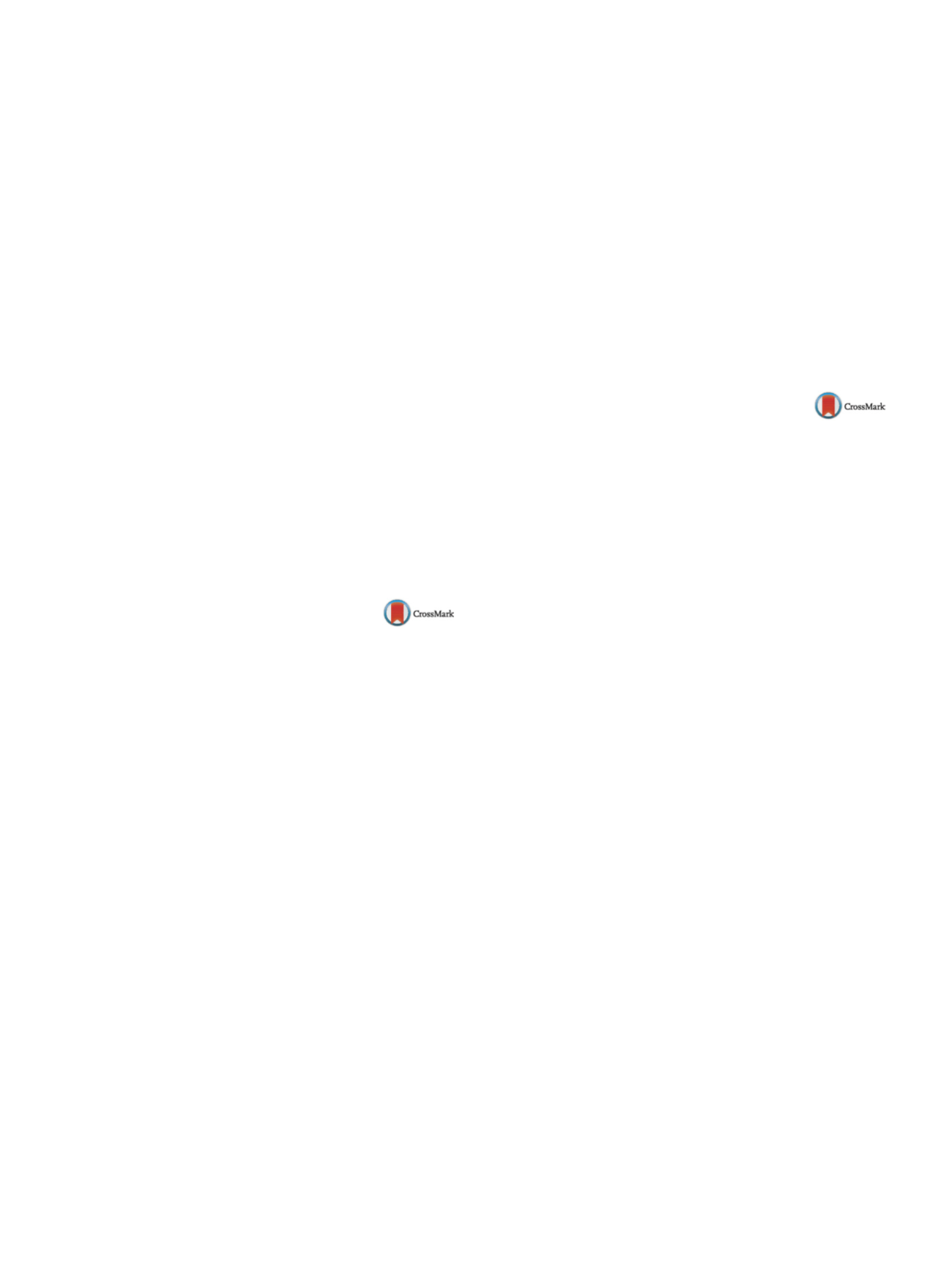

S520
25th European Congress of Psychiatry / European Psychiatry 41S (2017) S465–S520
tional intense expressions with anti-figurative abstract style. Their
main place of creative debates was Cedar Tavern in New York City,
considered by art critics an important incubator of the Abstract
Expressionism. Jackson Pollock, one of the most prominent figures
of this movement, suspected of having bipolar disorder, abused
alcohol during long periods of his life, for which he even under-
went psychotherapy. Unfortunately, he died in a car accident while
driving under influence, after decades of innovative work, during
which he created a new painting method and produced composi-
tions which are nowadays between the most expensive works of
art. Mark Rothko also had periods of heavy drinking, and finally he
died by cutting his armswith a razor. He is considered a genius, who
created a completely new perspective over painting, and his works
are also between themost expensive paintings in theworld.Willem
de Kooning was affected by alcoholism since his early years, and
developed dementia, at least partially induced by abusive drinking.
Although affected by neurocognitive disorder, he continued to pro-
duce amazingly creative paintings until his final years and in 2016
one of his works obtained the record for the most expensive paint-
ing ever sold. Using alcohol as a tool for increasing creativity risks
to expose the creator to severe disorders or even death, the sub-
ject walking on a narrow line between sublimation of unconscious
impulses and tragic resignation before them.
Disclosure of interest
The presenting author was speaker for Bris-
tol Myers Squibb and Servier, and participated in clinical research
funded by Janssen Cilag, Astra Zeneca, Eli Lilly, Sanofi Aventis,
Schering Plough, Organon, Bioline Rx, Forenap, Wyeth, Otsuka
Pharmaceuticals, Dainippon Sumitomo.
http://dx.doi.org/10.1016/j.eurpsy.2017.01.687EV0358
Pitfalls of positivity–new perspectives
on the futility of negating negativity
V. Vukovic
1 ,∗
, S. Nikoli´c-Lali´c
2, J. Miti´c
3, O. Golubovi´c
4, V. Savi´c
41
Special hospital for psychiatric disorders “dr Slavoljub Bakalovi´c”,
Acute psychosis ward, Vrˇsac, Serbia
2
Special hospital for psychiatric disorders “dr Slavoljub Bakalovi´c”,
Early interventions ward, Vrˇsac, Serbia
3
Special hospital for psychiatric disorders “dr Slavoljub Bakalovi´c”,
Psychogeriatric ward, Vrˇsac, Serbia
4
Special hospital for psychiatric disorders “dr Slavoljub Bakalovi´c”,
Affective disorders ward, Vrˇsac, Serbia
∗
Corresponding author.
The claim that “thinking positive” betters one’s life has become
pervasive in our contemporary culture. Proponents of this style
of reasoning, including the head of the positive psychology move-
ment, Martin Seligman, claim their goal is to create a field focused
on human well-being and the conditions, strengths and virtues
that allow people to thrive, and back their standpoint with a great
number of studies.
However, critics of themovement have, first of all, pointed out flaws
in some of the concepts and studies backing them, and second, per-
formed experiments of their own which show not only that forced
positive thinking doesn’t help, but can sometimes be harmful.
More worrisome than disputes in the therapeutic community is
the tendency of mass media and our commodified society to abuse
these approaches, the end result being a whole scope of popular
psychology books which promise wealth, happiness and ideal part-
ners to those prepared to “believe”, and the presence of a horde of
self-appointed gurus promising easy answers and quick solutions.
This is only a symptom of our contemporary postmodern condi-
tion, one well phrased by the Slovenian philosopher ˇZiˇzek - “the
commandment of the ruling ideology is ‘enjoy!”’.
From philosophers of negativity (Nietzsche, Schopenhauer) to psy-
chotherapists dealing with automatic negative thoughts, we come
to our proposed field of research in the “neuroscience of negativity”,
a search for the biological underpinnings of positivity/negativity,
focusing primarily on their relation to Cloningers’ dimensions of
personality and mood disorders.
Disclosure of interest
The authors have not supplied their decla-
ration of competing interest.
http://dx.doi.org/10.1016/j.eurpsy.2017.01.688EV0359
Is international affective picture
system (IAPS) appropriate for using in
Iranian culture, comparing to the
original normative rating based on a
North American sample
N. Zamani
Tehran university of medical sciences- Tehran- Iran., sports medicine
research center- neuroscience institute, Tehran, Iran
Background
Previous studies have shown that cultural context
has an influence on emotion and cognition. In this study the emo-
tional response to international affective picture system (IAPS) was
compared between Iranians and normative ratings of Americans
young adults.
Method
One hundred and thirty eight Iranian university stu-
dents (85 women, 48 men) age 18 to 52 (average= 31, SD = 7.76)
enrolled in the study. Participants’ emotional response to IAPS
images were rated in three dimensions (valence, arousal, domi-
nance) using self-assessmentManikin (SAM) system. Then, valence,
arousal, dominance scores were compared to those of 100 Ameri-
can undergraduates (50 females, 50 males) of the same age group,
enrolled at Florida university and surveyed by Prof. PJ Lang in 2008.
Result
Our results indicate that there is complete correlation
between the mean ratings of valence, arousal and dominance
between Iranian and American participants. Also the results
showed similarities in valence ratings, but arousal ratings espe-
cially in female participants were different. The relationship
between arousal and valence showed a similar boomerang shaped
distribution seen with the North American sample. Iranian sam-
ple showed positively offset and negative bias comparable to the
American counterparts.
Conclusion
The results are promising in the sense that IAPS
images can be used in studies within Iranian cultural context.
However, arousal values require a modification for their proper
application in Iranian cultural context.
Disclosure of interest
The author has not supplied his/her decla-
ration of competing interest.
http://dx.doi.org/10.1016/j.eurpsy.2017.01.519

















